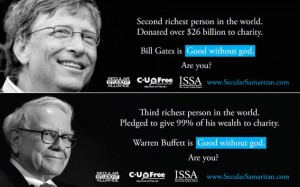Man of Steel seems
to be the Tim Tebow of superhero movies as critics either seem to love the
movie or hate it with a passion. Even a number of my favorite online critics
think it is a travesty of a film and have urged people not to see it. I would
like to count myself in the love it category. This movie, in my opinion, is the
Superman movie I have been waiting for. This all goes back to the fact that I
am a big fan of all of the DC animated movies that have been released straight
to Blu-ray and DVD. What I love about these films are their epic natures. The
battle between Darkseid, Superman, and Supergirl at the end of Superman/Batman: Apocalypse or Green
Lantern’s solar radiation blocking construct at the end of Justice League: Doom are epic highlights that are rarely seen in
the live action portrayals of superheroes. Why bring this up? Man of Steel is epic to a ridiculous
degree.
One thing is for sure, Zack Snyder, David Goyer, and
Christopher Nolan know superheroes. The battles at the end of this film between
Superman and the Kryptonians under General Zod seem like they are lifted right
from the pages of the comics. Trains go flying, city blocks get destroyed,
satellites are hurled to the Earth, and jets plummet to the ground. What’s
amazing through all of this is that you definitely get a sense of the human
toll of it all. There is one scene in particular that really hits him home
about the perils of the regular person trapped in one of these epic brawls. This
is something I think really puts the movie above The Avengers in that while it seems like a similar amount of damage
is being done to New York City, you never get a sense of dread for the people
below. This realization of civilian casualties is also very prevalent in The Dark Knight trilogy as well.
A criticism pertaining to these battles is that they don’t
stay true to the comics in that Superman would have located the fight to a more
secluded area to prevent further loss of human life. Well, apparently they
haven’t read too many comics as probably seventy five percent of time, Superman
battles in the middle of Metropolis or another population center. Thus, I think
the criticism is unfounded. Plus, with the exception of Batman, who is more about
outwitting and out thinking his opponents, superhero comics as a whole are
about superhuman free-for-alls. Only three times have I ever felt that a live
action movie caught the feel of comic book battles. The first time was in Spiderman 2 in the fight between Doctor
Octopus and Spiderman. The second time was in The Avengers during the battle in New York City and the third time
was in this movie.
Another criticism I have heard is that the pacing is off
with numerous flashbacks to Superman’s childhood. To knock down this criticism,
let me mention my favorite theatrical Batman movie, Batman: Mask of the Phantasm. In the geek world, this film is
almost universally loved as one of the greatest Batman stories ever put to
film. What a lot of people probably
don’t realize about the movie is that it is an origin story as much as it is a
detective story. Both Man of Steel and
Batman: Mask of the Phantasm use the
same exact flashback type device with similar pacing to tell each character’s
origin. Why it works for the latter movie in many critics’ eyes but not in the
former, I just couldn’t tell you.
One thing I’ve noticed about both fanboys and critics is
that they like to hype up certain genre movies to the point that no matter what
product is shown, it could never live up to that built-up hype. This is why
movies like Iron Man 2 (which was not
bad) are so universally panned
because if a movie doesn’t live up to its hype, it is the worst film ever. The
sad thing is that these same people never learn and build up that hype over and
over. Only two genre movies have ever lived up to this hype and those two
movies are The Dark Knight and The Avengers.
While in my opinion Man
of Steel was much better than its hype, I think critics are too attached to
Christopher Reeves’ version of the character to give this movie a fair shot. I’ll
be honest with you. I have never really cared for his portrayal of Superman.
Well, his Superman wasn’t bad, but I just loathe his version of Clark Kent. To
me, Reeves’ Clark Kent is so overcompensatingly bumbling that I think it would
be very obvious that he is Superman. I much prefer Superman: The Animated Series’ and Lois and Clark’s portrayals of
Clark Kent which are much better as you can believe that he actually is an
investigative journalist. The jury is still out on Henry Cavill’s Kent as we
didn’t see much of him, but hopefully it’s truer to my favorite versions.



